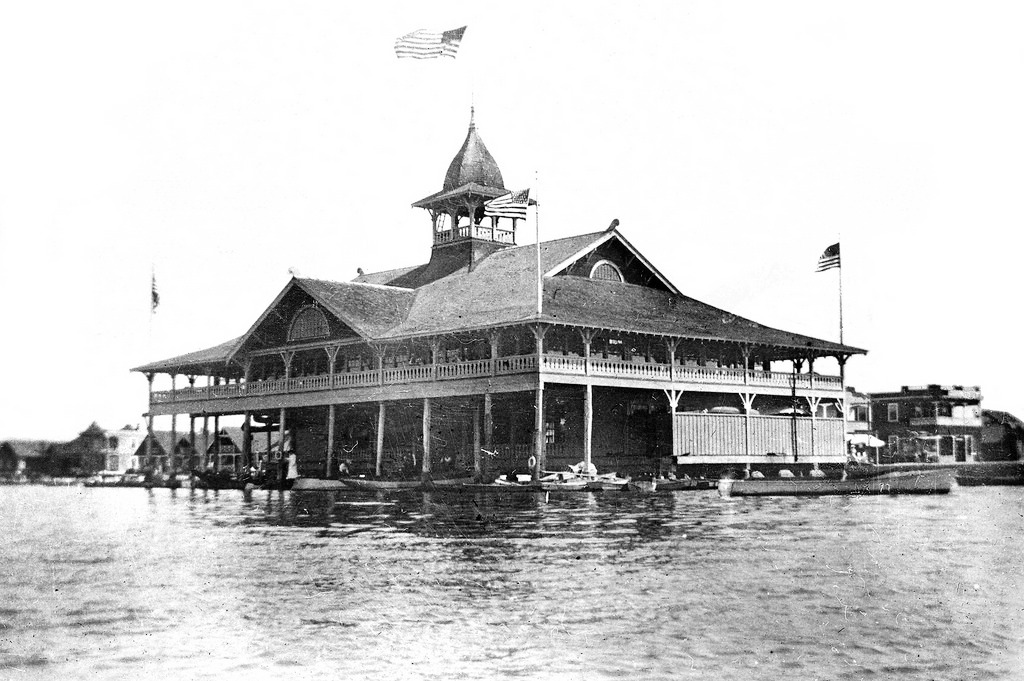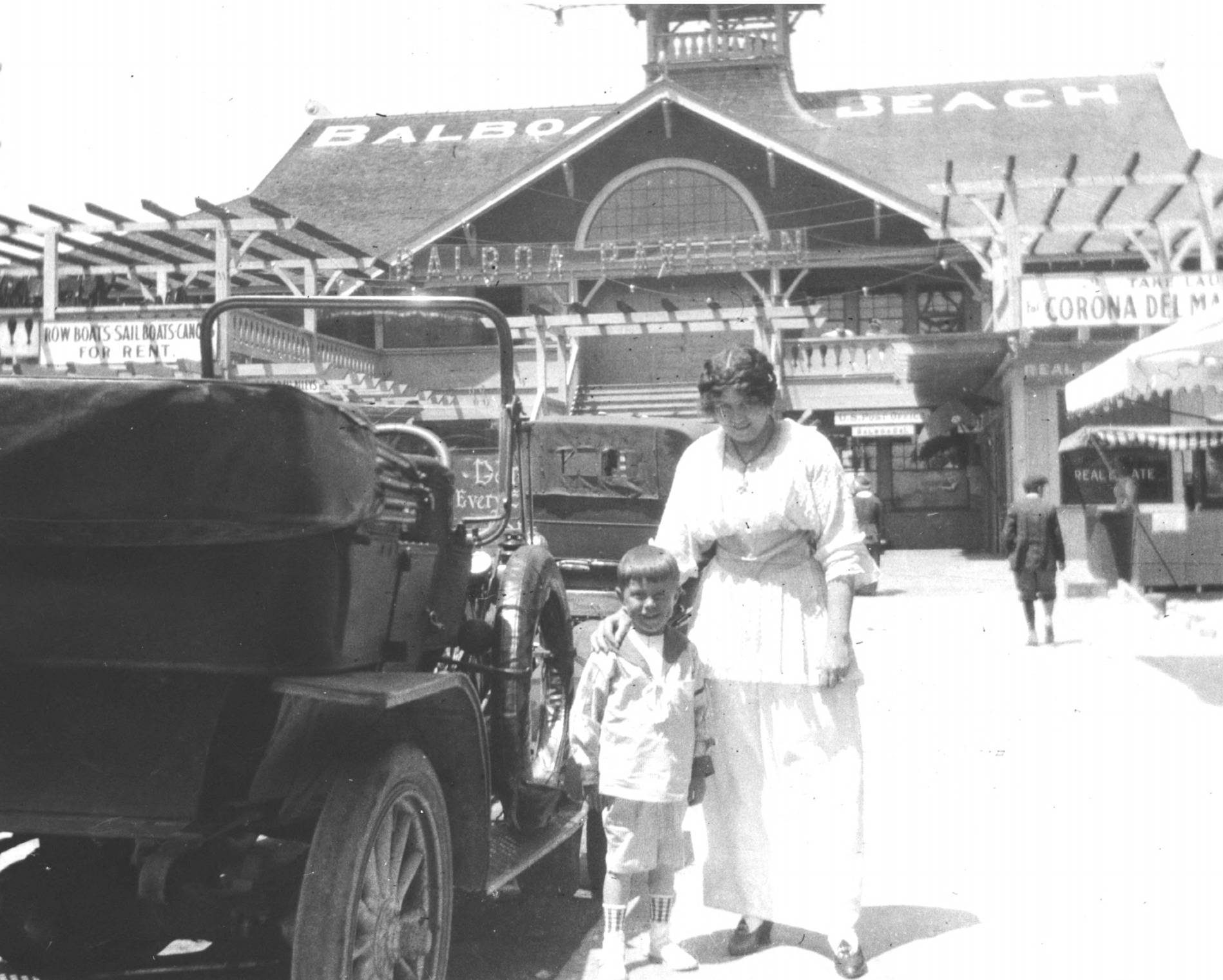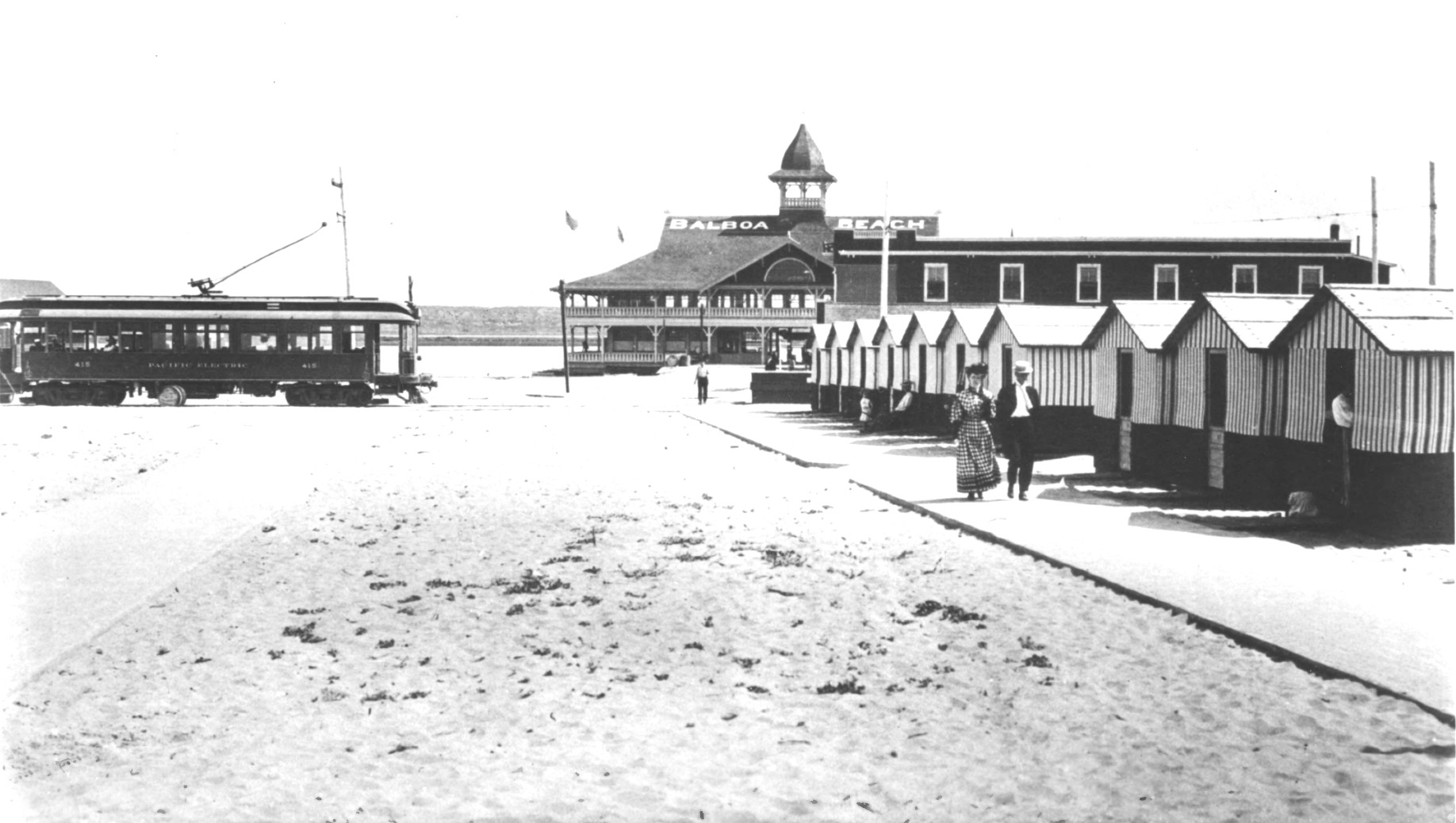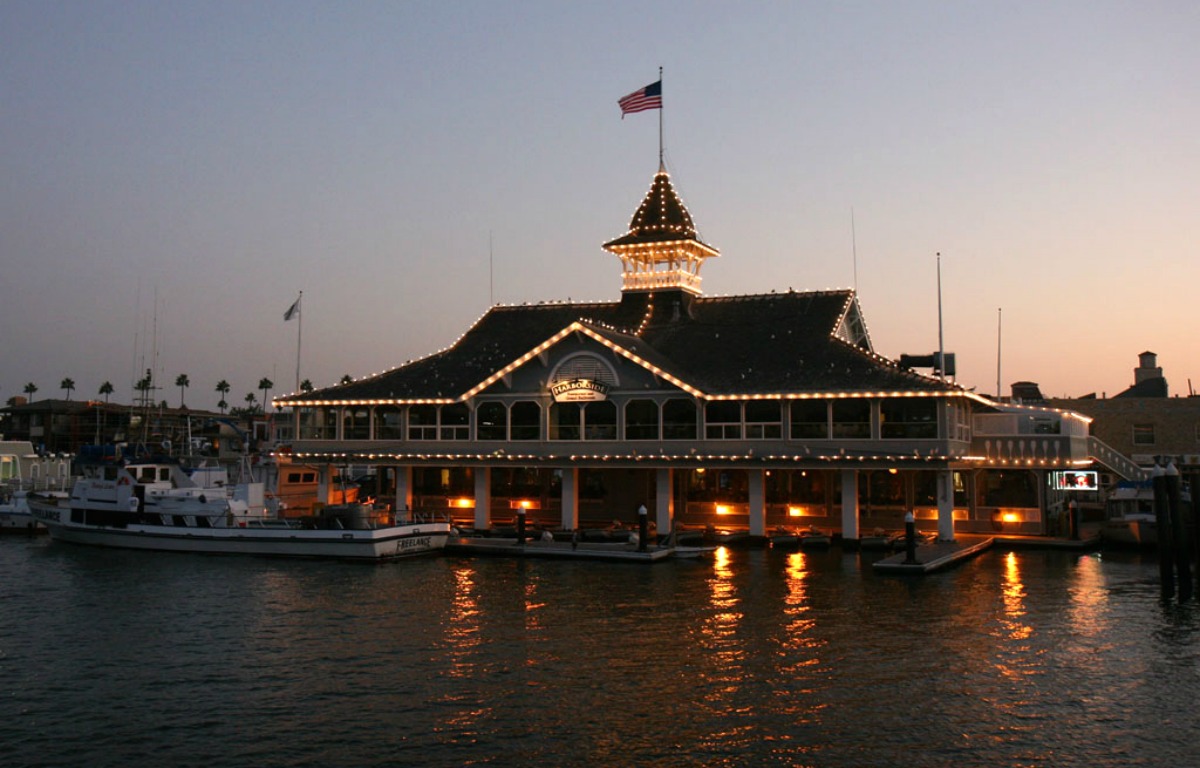Balboa Pavilion
400 Main Street, Newport Beach, California
In the early 20th century, Southern California outdoor sports enthusiasts flocked to a tiny Orange County coastal town called Bayside for the multitude of clams and wild ducks. Eyeing an opportunity, a group of Los Angeles-based promoters who called themselves the Newport Bay Investment Company were granted permission in 1905 by the U.S. Secretary of War to construct a pavilion for the purpose of “a boathouse, bath-house, and pavilion.” One developer rechristened the town "Balboa" after the Spanish explorer Vasco Núñez de Balboa, and in early 1906 construction began. Designed by architect Fred R. Dorn, who later worked with Stiles O. Clements of Morgan, Walls, and Clements (the El Capitan Theatre, the connected Pellissier Building and the Wiltern) and built by Chris McNeill (known for the Old Orange County Courthouse in Santa Ana), the Balboa Pavilion was designed in the popular Victorian style.
In just six months, the two-story waterfront wooden Victorian with its distinctive sloping hip roof and ornate cupola were finished on July 1, 1906. The timing and location were strategic: the pavilion was the southernmost stop for the newest extension of the Pacific Electric Red Car line, which traveled from Pasadena to Los Angeles before connecting to Balboa. On opening day, July 4th, 1,000 or so city dwellers rode the rail to the 65-foot-high pavilion, where they were delighted by dozens of changing rooms to don their bathing suits, a 50-by-100-foot dance hall, a balcony, and an 8,000-square-foot meeting room, all built for about $15,000. The nearby Balboa Pier and Balboa Hotel were quickly built to coincide with the pavilion's patriotic opening.
Other additions to the pavilion followed: a bowling alley, a barber shop run by Lucky Tiger Jack, an arcade, museum, and Balboa’s first post office. The Newport Bay Investment Co.’s efforts paid off and Balboa Pavilion became a successful weekend escape. Bathing beauty contests were held each Fourth of July, which attracted more beachgoers and fueled interest in the area. Beach shacks were quickly built and properties were sold.
The Balboa Pavilion is the oldest standing building in Newport Beach and is its most famous landmark. In 1983, it was added to the list of National Historic Places because of its “unique architectural character and for the role it played in the development of Newport Beach”, according to the National Register. It is considered one of the most noted historical sites on the West Coast and is one of California's last surviving waterfront recreational pavilions from the early 1900s. The Pavilion is still enjoyed as a marine recreational facility and includes a restaurant and ballroom for special events.






